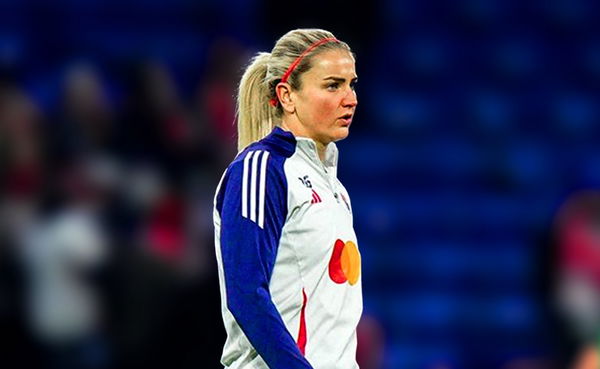

“I don’t think it’s arguably — it is the most competitive league from top to bottom,” Emma Hayes remarked earlier, showering praise on the National Women’s Soccer League. Mind you, this is coming from the iconic coach who spent over a decade leading teams in Europe’s top-tier WSL, racking up an impressive 16 trophies along the way. And yet, despite such high praise, we’ve seen a wave of big-name stars leaving the American domestic scene in pursuit of opportunities abroad. The reason, you ask? Lindsey Heaps might just have the answer.
There was a time when the USWNT skipper herself was playing in her country’s domestic women’s soccer league. Kick-starting her career with the WPSL’s Colorado Rush, she played for French giants Paris Saint-Germain between 2012 and 2016. Heaps then joined the Portland Thorns, where she spent over five years before eventually returning to the French league—initially joining Lyon on loan, with the move becoming permanent in 2022.
Since then, the 30-year-old midfielder has enjoyed the highs of European glory. While it’s true that every player dreams of such success, the question is are there other factors at play that influence the decision—or perhaps make the process of leaving the NWSL that much easier?
ADVERTISEMENT
Article continues below this ad
Here’s what Heaps has to say: “There’s a salary cap in the NWSL,” began the midfielder while speaking to Just Women’s Sports. “And that’s an ongoing issue there that hopefully can be changed or increased, but I think it’s a factor…For players coming overseas.”
View this post on Instagram
Well, it’s not like there’s some kind of salary cap in Europe; there, clubs usually operate under a ‘soft’ salary cap. The Women’s Super League and the Women’s Championship, for instance, base the cap on a percentage of a club’s revenue—allowing teams to dedicate up to 40% of their earnings to player wages. This includes income from parent organizations, meaning English teams linked with wealthier men’s clubs can theoretically invest more heavily in their women’s squads.
Then again, the ‘soft‘ salary cap is not completely right. Many have criticized it for further widening the financial gap between clubs. No wonder you’ll see affluent teams like Chelsea, Arsenal, Manchester United, and Manchester City spending speding big on their transfer targets. And that’s exactly why the NWSL operates with a fixed salary cap to maintain competitive balance and prevent richer franchises from monopolizing top talent.
Yet, this very rule appears to be a double-edged sword—while it ensures parity, it may also be limiting the league’s ability to draw elite international players, let alone players staying!
What’s your perspective on:
Can the NWSL remain competitive if top players keep leaving for better pay abroad?
Have an interesting take?
Lindsey Heaps isn’t alone in remaining concerned about the NWSL cap!
Earlier, Tobin Heath and Christen Press had also expressed their concern regarding NWSL’s salary cap. “Overall, the problem exists folks, because of the salary cap that is in the NWSL currently. Over in Europe, that does not exist. There is no salary cap in the WSL,” said Heath, noting how more lucrative contracts abroad often tempt players to leave the American league.
Press also echoed Heath’s sentiments, expressing her own concerns about the spending disparity between the U.S. and Europe. The Angel City star believes this financial gap is a major factor behind the increasing number of players departing the NWSL. “The difference is so gross that it makes it almost not worthy of a daily discussion as to why players are going to the UK,” she added.
For context, the NWSL salary cap was around $2.4 million last year. Yes, this means that teams had to manage all player salaries within that limit. This year, the cap has reportedly increased to $3.3 million—a notable jump in terms of year-over-year growth.
ADVERTISEMENT
Article continues below this ad

ADVERTISEMENT
Article continues below this ad
However, the contrast with Europe is staggering. FIFA’s 2024 Global Transfer Report says that $12.5 million was spent on female soccer players in 2024. Guess how much of that was spent by English clubs alone. A whopping $4.49 million, which accounts for about a third of the total amount.
It clearly highlights just how far ahead European teams are in terms of financial muscle. Meanwhile, the removal of the cap seems unlikely for the NWSL. This only raises the question of how the league’s top brass will adapt to stay competitive against the deep-pocketed European sides.
ADVERTISEMENT
ADVERTISEMENT
ADVERTISEMENT
ADVERTISEMENT


"Can the NWSL remain competitive if top players keep leaving for better pay abroad?"